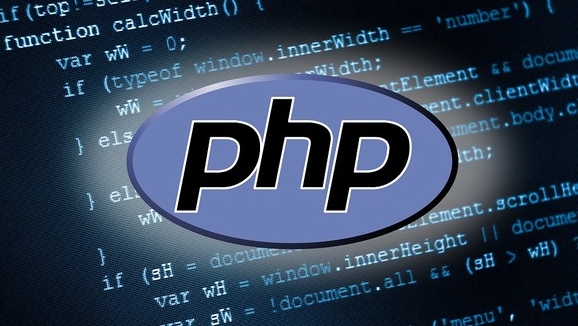The most common method to directly create alias for functions in PHP is to use the function keyword to define a new function to call the original function. The specific steps are as follows: 1. Define the alias function through function myAliasFunction($arg) { return originalFunction($arg); }; 2. If the function has multiple parameters or default values, the parameter list needs to be copied synchronously; 3. For custom functions, use the use function syntax to create alias in combination with the namespace; 4. Alias ??can be encapsulated through class static methods for unified management. In addition, although alias functions could be generated dynamically by create_function() in the early days, this method has been removed in PHP 8.0 and is not recommended. Although the above method is not a "alias assignment" in the strict sense, it can effectively implement similar functions.

In PHP, the method of directly creating alias for functions is actually very simple. The most common method is to use function_exists() in conjunction with create_function() or the more recommended "named functions" method. However, it should be noted that PHP does not natively support "alias assignment" like other languages ??(such as Python), but similar effects can be achieved through some techniques.

Defining alias functions using function keyword
This is the most common and recommended way to do it: by defining a new function and letting it call the function you want to "aliased".

function myAliasFunction($arg) {
return originalFunction($arg);
} This way, you can call the original originalFunction() myAliasFunction() ).
- ? Simple and clear
- ? Supports all PHP versions
- ?If there are many parameters or default values, remember to copy the past synchronously
If you want to alias a function with multiple parameters, you only need to copy the parameter list:

function formatText($text, $upper = false) {
return customFormat($text, $upper);
} Use create_function() (not recommended)
Although it is also possible to generate functions dynamically with create_function() , this method is marked as abandoned after PHP 7.2 and has been removed after 8.0. So unless you maintain an old project, this method is not recommended.
Use namespace and use function (for custom functions)
If you are referencing or renaming a user-defined function in your own project (not a built-in function), you can combine the namespace to make an "alias":
namespace MyProject; use function MyProject\Helpers\longFunctionName as shortName; shortName(); // LongFunctionName is actually called
This method is particularly suitable for organizing code structures, making function calls more concise.
Tips: Encapsulate alias with static class methods
If you want to manage function alias uniformly, you can also concentrate them in one class:
class FuncAlias ??{
public static function log($msg) {
error_log($msg);
}
}Then use it like this:
FuncAlias::log("This is a log message");Although this is not a "alias" in the strict sense, it is very practical in some scenarios, especially when encapsulating global functions.
Basically that's it. Although PHP's function aliasing mechanism is not as flexible as some languages, it can easily implement functions as long as you use the right method.
The above is the detailed content of How to create a function alias in PHP?. For more information, please follow other related articles on the PHP Chinese website!

Hot AI Tools

Undress AI Tool
Undress images for free

Undresser.AI Undress
AI-powered app for creating realistic nude photos

AI Clothes Remover
Online AI tool for removing clothes from photos.

Clothoff.io
AI clothes remover

Video Face Swap
Swap faces in any video effortlessly with our completely free AI face swap tool!

Hot Article

Hot Tools

Notepad++7.3.1
Easy-to-use and free code editor

SublimeText3 Chinese version
Chinese version, very easy to use

Zend Studio 13.0.1
Powerful PHP integrated development environment

Dreamweaver CS6
Visual web development tools

SublimeText3 Mac version
God-level code editing software (SublimeText3)
 PHP Variable Scope Explained
Jul 17, 2025 am 04:16 AM
PHP Variable Scope Explained
Jul 17, 2025 am 04:16 AM
Common problems and solutions for PHP variable scope include: 1. The global variable cannot be accessed within the function, and it needs to be passed in using the global keyword or parameter; 2. The static variable is declared with static, and it is only initialized once and the value is maintained between multiple calls; 3. Hyperglobal variables such as $_GET and $_POST can be used directly in any scope, but you need to pay attention to safe filtering; 4. Anonymous functions need to introduce parent scope variables through the use keyword, and when modifying external variables, you need to pass a reference. Mastering these rules can help avoid errors and improve code stability.
 How to handle File Uploads securely in PHP?
Jul 08, 2025 am 02:37 AM
How to handle File Uploads securely in PHP?
Jul 08, 2025 am 02:37 AM
To safely handle PHP file uploads, you need to verify the source and type, control the file name and path, set server restrictions, and process media files twice. 1. Verify the upload source to prevent CSRF through token and detect the real MIME type through finfo_file using whitelist control; 2. Rename the file to a random string and determine the extension to store it in a non-Web directory according to the detection type; 3. PHP configuration limits the upload size and temporary directory Nginx/Apache prohibits access to the upload directory; 4. The GD library resaves the pictures to clear potential malicious data.
 Commenting Out Code in PHP
Jul 18, 2025 am 04:57 AM
Commenting Out Code in PHP
Jul 18, 2025 am 04:57 AM
There are three common methods for PHP comment code: 1. Use // or # to block one line of code, and it is recommended to use //; 2. Use /.../ to wrap code blocks with multiple lines, which cannot be nested but can be crossed; 3. Combination skills comments such as using /if(){}/ to control logic blocks, or to improve efficiency with editor shortcut keys, you should pay attention to closing symbols and avoid nesting when using them.
 How Do Generators Work in PHP?
Jul 11, 2025 am 03:12 AM
How Do Generators Work in PHP?
Jul 11, 2025 am 03:12 AM
AgeneratorinPHPisamemory-efficientwaytoiterateoverlargedatasetsbyyieldingvaluesoneatatimeinsteadofreturningthemallatonce.1.Generatorsusetheyieldkeywordtoproducevaluesondemand,reducingmemoryusage.2.Theyareusefulforhandlingbigloops,readinglargefiles,or
 Tips for Writing PHP Comments
Jul 18, 2025 am 04:51 AM
Tips for Writing PHP Comments
Jul 18, 2025 am 04:51 AM
The key to writing PHP comments is to clarify the purpose and specifications. Comments should explain "why" rather than "what was done", avoiding redundancy or too simplicity. 1. Use a unified format, such as docblock (/*/) for class and method descriptions to improve readability and tool compatibility; 2. Emphasize the reasons behind the logic, such as why JS jumps need to be output manually; 3. Add an overview description before complex code, describe the process in steps, and help understand the overall idea; 4. Use TODO and FIXME rationally to mark to-do items and problems to facilitate subsequent tracking and collaboration. Good annotations can reduce communication costs and improve code maintenance efficiency.
 Learning PHP: A Beginner's Guide
Jul 18, 2025 am 04:54 AM
Learning PHP: A Beginner's Guide
Jul 18, 2025 am 04:54 AM
TolearnPHPeffectively,startbysettingupalocalserverenvironmentusingtoolslikeXAMPPandacodeeditorlikeVSCode.1)InstallXAMPPforApache,MySQL,andPHP.2)Useacodeeditorforsyntaxsupport.3)TestyoursetupwithasimplePHPfile.Next,learnPHPbasicsincludingvariables,ech
 How to access a character in a string by index in PHP
Jul 12, 2025 am 03:15 AM
How to access a character in a string by index in PHP
Jul 12, 2025 am 03:15 AM
In PHP, you can use square brackets or curly braces to obtain string specific index characters, but square brackets are recommended; the index starts from 0, and the access outside the range returns a null value and cannot be assigned a value; mb_substr is required to handle multi-byte characters. For example: $str="hello";echo$str[0]; output h; and Chinese characters such as mb_substr($str,1,1) need to obtain the correct result; in actual applications, the length of the string should be checked before looping, dynamic strings need to be verified for validity, and multilingual projects recommend using multi-byte security functions uniformly.
 Quick PHP Installation Tutorial
Jul 18, 2025 am 04:52 AM
Quick PHP Installation Tutorial
Jul 18, 2025 am 04:52 AM
ToinstallPHPquickly,useXAMPPonWindowsorHomebrewonmacOS.1.OnWindows,downloadandinstallXAMPP,selectcomponents,startApache,andplacefilesinhtdocs.2.Alternatively,manuallyinstallPHPfromphp.netandsetupaserverlikeApache.3.OnmacOS,installHomebrew,thenrun'bre






